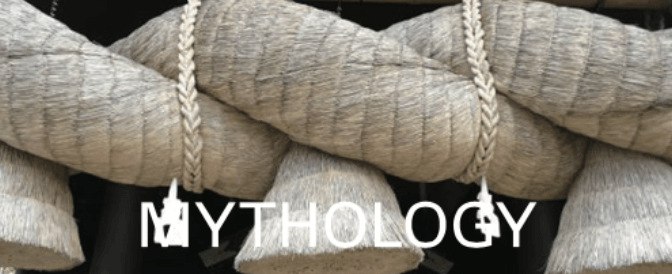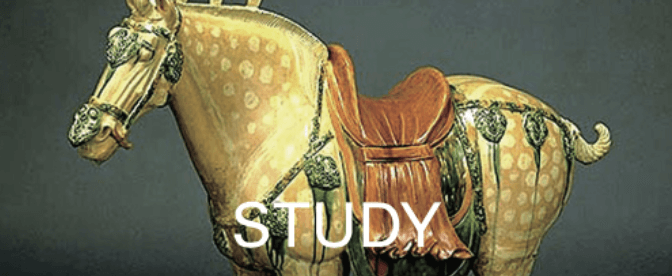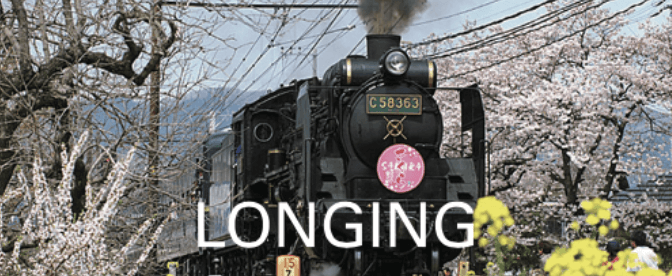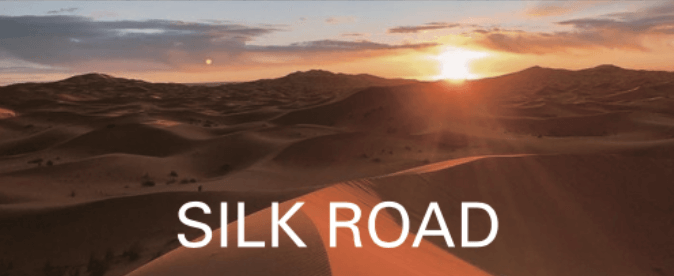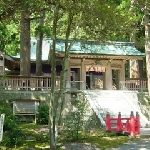
This shrine is located on the northern tip of Hamochi plain on Sado Island and is surrounded by a rich and prosperous forest embraced by a calm mountain. This shrine’s dignity shows the prime shrine as Ichinomiya in Sado Island. It enshrines the God Isotakeru, as Guardian of traffic safety on land and sea, and as God of afforestation. When the Jomon period(16,000-3000 years ago) began, the sea level rose, and the Tsushima warm current flowed into the Sea of Japan. At that time, people came from western Japan-Kyushu Island, Izumo Province Shimane, and middle-northern Japan-Noto Peninsula, to Sado. They made rich forests, and rich myths were handed down here.

This Museum of Literature is located in the northwest of Fukuyamajo Castle, and it presents and introduces literary people related to Fukuyama City. The museum also collects and researches various materials, and exhibits literature from writers in the Bingo region of Hrioshima, aiming to develop the culture in this region. Ibuse Masuji (1898 – 1993) is a Japanese novelist born in Kamo-cho, Fukuyama city.
He wrote a famous novel, Sanshouo – salamander. The story of a salamander who developed a big head and could not get out of the grotto. Ibuse studied locally at the Kamo Elementary School, which used to breed two Sanshouo,,,,,.

This museum specializes in the Orient, with about 5,000 items focused on the archaeological arts of West Asia from the ancient times to the early modern times. The Relief of Assyria, the Eagle-headed deity with wings from BC 9th century Iraq, is a part of the wall decoration at the Palace of Assyrian, which had unified the ancient Orient world for the first time.
The winged synthetic beast, Chimaira, is a prototype of Tenma, a flying horse, which had been revered from the Tumulus period (the 3rd– 7th century) to the Nara period (710 – 794) in Japan.
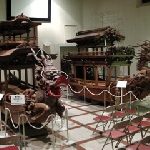
The museum, through historical materials, introduces Chosen Tsushinshi, Envoys from Korea for Peace Building and Cultural Exchanges between Korea and Japan from the 17th to 19th century. The name of this place, Ushimad, was derived from Ushioni (a cow demon orally handed down in western Japan), that was thrown by Sumiyoshi Myojin, a guardian of safe sea travel, Waka (Japanese poem) and agriculture and fishing.
Ushimado was a port for awaiting a favorable tide and wind.
Chosen Tsushinshi visited this port. This Envoy started in the Muromachi Period (1366 – 1573), as Kaito-ken-sakkanshi, Envoys from Korea for Peace Building and Cultural Exchanges between Korea and Japan from the 14th to 16th century. This Envoy visited Japan 12 times in the Edo Period. At that time, many common people could have watched, from the main road, the Communication Envoy’s well-dressed party and musical band.
Karako Odori, a children’s dance with ancient Chinese clothes, was created as local dance and was imitated the party of Communication Envoy.
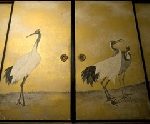
This shrine has been located on the mid-slope of Mt. Zozusan, since ancient times.
This shrine became Kingasho, a temple for the Tokugawa Shogunate to pray, in the Edo period (1603 – 1868). The folk in Edo competed to come this shrine, nicknamed Konpira-san. 10th Konkoin Yuzon (1739 – 1787), Betto, the chief Administrator of this shrine realized this trend. It was said that Yuzon learned the painting in Kyoto, by Ito Jakuchu (1716 – 1800), a Japanese painter, in his boyhood days.
He had an eye to identify the real thing that would become the pioneer in the days. 5 halls of Omote Shoin, reception hall, are decorated with a wall painting by Maruyama Okyo (1733 – 1795) a painter and the founder of Maruyama school of painting. The wall painting was made in the later years of Okyo in the Tenmei era (1781 – 1789) – the Kansei (1789 – 1804) era in the Edo period, which were highly evaluated in Paris, now.
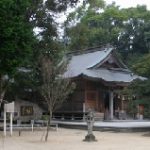
When Empress Jingu went to the peninsula for the conquest, she dedicated the sacred mirror, Kagami, to this shrine as a prayer for victory. This shrine name came from the mirror, which Murasaki Shikibu referred to, in the Tale of Genji, Japanese literature from the early part of the 11th century, as “The Miller, Kagami in Matsuura (of Kagami shrine)”.
From the top of Mt. Kagamiyama(284m), you can look out over Ikinoshima Island in the Genkai-nada Sea, which is located on the way to the Korean peninsula. When Empress Jingu returned to this place from the Korean peninsula, she had labor pains, and gave birth to Emperor Oujin safely with the clear water of this shrine. The emperor was regarded as the Yawatanokami, Hachiman deity (God of War).
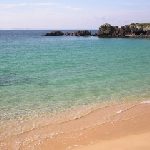
Iki Island was connected to Kyushu Island 10,000 years ago. After becoming an Island, Iki has had a history of relations with the Chinese continent and the Korean peninsula, including being occupied by the Mongolian Invasions of Japan (1274 and 1281), in the Kamakura period (1185 – 1333).
Nishikihama Promenade in the shallow beach on the east side of the airport, is the prosperous marine sports area. The promenade is the “Superb View Course at the Seaside”.
Nishikihama is a famous place where Empress Jingu — her husband was Emperor Chuai, and her son was Emperor Ojin — dried the clothing of Nishiki (Japanese brocade), when she went to the Korean peninsula in ancient times.
The name of the beach came from this legend of Nishiki clothing. Elegant wind blows on the shore, which wraps everything softly.

Aso Shrine which is located in Ichinomiyacho, Aso, enshrines the mountain god of Aso, the grandson of Emperor Jinmu, “Takeiwatatsunomikoto”. It was said that the mountain god of Aso kicked a part of Aso’s outer rim, which used to be an ancient lake, and flushed the water stored in the caldera lake to Kumamoto in the west. The God released the huge catfish from the caldera lake, spreading agriculture and cultivation to the people.
Along these transmissions, the approach to the Aso shrine does not go to the Worship Hall, but to Mt. Aso Takadake (1592m) and the Mt. Aso Nakadake Crater in the south. This shrine had major damage from the 2016 Kumamoto earthquake.
The restoration work has proceeded and will be restored in 2023. The Onda festival each July, which prays for a good harvest, continued even after the earthquake.
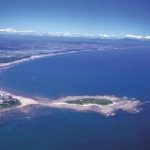
Aoshima, a small green island 1.5km around, is surrounded by wavy rocks called Oninosentakuita, a fantastic eroded rock formation that looks like a washboard. The rocks had been eroded by waves. They contained the regular alternating layers of sandstone and aqueous mudstone rock that accumulated on the sea floor during 24 to 2 million years ago. About 80% of Aoshima inhabiting plants are Biro, Livistona chinesnsis, belonging to the subtropical plant, palms. Aoshima Shrine is a guardian deity of this island, with a tropical atmosphere. This shrine enshrines Hikohodemi no mikoto, Yamasachihiko in the Japanese mythology of “Umisachihiko and Yamasachihiko”. Here, you can encounter the scene and the mythology, like Yamasachihiko‘s journey to the Palace of the Dragon King, where time passed very differently from the real world.
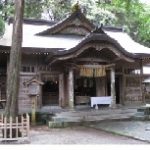
Takachiho is located in northern Miyazaki. It is said that there used to be Takachihonomiya, the Palace of Himuka Sandai, three generations of Ninigi, Hoori, and Ugayafukiaezu who were the ancestor of Emperor Jinmu.
Minamoto no Yoritomo (1147 – 1199), the 1st shogun of the Kamakura Shogunate sent Hatakeyama Shigetada (1164 – 1205) as his substitute to Takachiho Shrine and dedicated the treasure to this shrine in the Kamakura period. His dedicated a gift of Chichibu Sugi, Japanese cedar, and a pair of iron statues of shrine guardian dogs, Komainu (55cm tall).
These still remain on the site of this shrine. Iron statues are more difficult to cast the shape and details than bronze statues. Its high casting technology is really amazing.
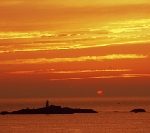
This promenade along the coast has an entrance in the huge Hyuga Sun Park in Mimitsu, Hyuga. The entire journey takes one hour. This vast scene is the scene of the beginning of Japan. The first emperor, Emperor Jinmu, gathered small boats in the bay and headed to the Kunisaki Peninsula, through the Bungo Channel, in a small group, in ancient times.
Sengoku Bune, a large junk boat, with capacity for 1,000 koku, a unit of volume of rice, arrived in Mimitsu, which was the commercial port of Takanabe Domain. Segoku Bune loaded with wood and headed to Kawachi Province from Mimitsu in the early modern time.
The sea road has continued since ancient times.
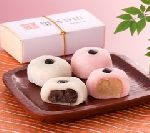
The founding of Miyazakijingo shrine is said to be the enshrined deity of Aso shrine, the grandson of Emperor Jinmu, “Takeiwatatsunomikoto”. The Tsuchimochi clan, the lord of a manor, in Hyuga Province, served and supported Usa Hachimangu Shrine in Oita.
They dedicated the shrine building during the Kamakura period in the 13th century. The Naito Family, Fudai daimyo, the hereditary feudal lord, who supported the Tokugawa shogunate, devoutly worshiped this shrine, during the Edo period in the 18th – 19th century.
Miyazaki Jingu’s specialty, Sanpaimochi rice cakes, originated from the rice cake that the villager in Mimitsunoura Hyuga Miyazaki made with mixed red beans, for good fortune. They were offered to Emperor Jinmu in Emperor Jinmu’s expedition to the east. Sanpaimochi are very popular sweets to invite good fortune.
